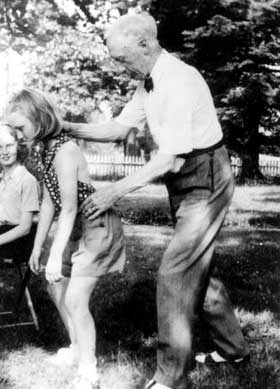 Eventually Alexander discovered what is now often referred to as debauched kinaesthesia, or faulty sensory awareness. This is when what we think we do, is not in fact, what we are actually doing! Try it out when you are next standing waiting in a queue or for a train or bus. Without looking, ask yourself what you are doing with your feet. Are they parallel to one another, are they turned in or out? Then look and see if you were right. Or, ask yourself if you are lifting your shoulders or tilting your head, then check your reflection in a window or a mirror to see.
Eventually Alexander discovered what is now often referred to as debauched kinaesthesia, or faulty sensory awareness. This is when what we think we do, is not in fact, what we are actually doing! Try it out when you are next standing waiting in a queue or for a train or bus. Without looking, ask yourself what you are doing with your feet. Are they parallel to one another, are they turned in or out? Then look and see if you were right. Or, ask yourself if you are lifting your shoulders or tilting your head, then check your reflection in a window or a mirror to see.
Alexander’s realisation that his sensory awareness was faulty showed him that although he thought he had his head, neck and back in a relationship which he had found to be that which is the most constructive for vocal reproduction, he had in fact reverted to his old habit of depressing the larynx. Therefore, he had first to inhibit (i.e. not react to) his response to the stimulus to speak, in order to prevent this pattern of misuse. Then he must project a series of mental orders or directions in order to maintain this relationship. In continuing this process of inhibition and direction, he would then have a choice to carry out his desired stimulus to speak, or not speak at all, or do something entirely different.
As long as he continued to project his directions for this new manner of use, he might then carry out any activity without relying on his old manner of use which was governed by his habit and habitual understanding of how he used himself.
